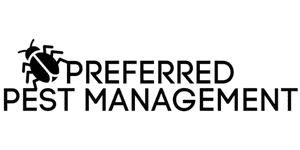Termites can cause significant damage to a property, leading to costly repairs. As a homeowner or property manager, it’s crucial to understand the importance of termite inspections and what to expect during the process. In this article, we provide a comprehensive guide on termite inspections, including the purpose, process, and what to look for.
What is a Termite Inspection?
A termite inspection is a thorough examination of a property to determine the presence of termites and any related damage. It is performed by a licensed and trained professional who specializes in detecting termites and their activities. The inspection includes a visual examination of the property’s interior and exterior, including the foundation, walls, floors, and roof. The inspector will also examine any surrounding trees, stumps, and debris to check for signs of termite activity.
Why is a Termite Inspection Important?
A termite inspection is an essential step in protecting your property from the damaging effects of termites. Early detection is key to preventing extensive damage, which can be costly to repair. In addition, termite damage is not typically covered by standard homeowner’s insurance policies. A termite inspection provides peace of mind, knowing that your property is protected from the potential damage caused by these pests.
When Should You Schedule a Termite Inspection?
It is recommended to schedule a termite inspection at least once a year, or any time you suspect a problem. Some common signs of termite activity include:
- Swarmers (winged termites) in the home
- Mud tubes on the exterior of the home
- Hollow-sounding wood
- Cracked or bubbling paint
- Presence of termite droppings
The Process of a Termite Inspection
The process of a termite inspection is straightforward and typically takes between 30 minutes to an hour, depending on the size of the property. During the inspection, the inspector will:

- Perform a thorough visual examination of the interior and exterior of the property
- Check for any signs of termite activity, including swarmers, mud tubes, and damaged wood
- Use specialized equipment, such as moisture meters and thermal imaging cameras, to detect any hidden infestations
- Provide a comprehensive report of their findings, including any recommendations for treatment
What to Look for During a Termite Inspection
During a termite inspection, the inspector will be looking for any signs of termite activity, including:
- Swarmers (winged termites)
- Mud tubes on the exterior of the property
- Damaged wood, including hollow-sounding wood and cracks
- Termite droppings
- Moisture levels in the property
- Any conducive conditions for termite activity, such as poor ventilation and high humidity levels
Conclusion
Termite inspections are crucial in protecting your property from the damaging effects of termites. By understanding the purpose, process, and what to look for during an inspection, you can ensure that your property is protected and that any potential problems are addressed in a timely manner. Don’t wait until it’s too late – schedule a termite inspection today!


